Did a Coded Message Lead an American to a Lost Civilization in China?
In 2016, the odds of finding a “lost” civilization or even city seem low.
(Illustration: Michael Tunk)
When Sheldon Gosline was living in China in 2013 to study the country’s lesser-used languages, a colleague at the Chinese Academy of Social Sciences showed him a mysterious set of ancient inscriptions, etched into flat stones and found by farmers in Guangxi province.
“He said, ‘See what you make of this,’” Gosline remembers. “No one has been able to figure this out.”
When Gosline looked at the inscriptions, he noticed something no one else had. Several characters appeared to belong to the Indus script, an undeciphered set of symbols that date back more than 4,500 years. Others could have been Persian cuneiform, turned on their sides. It was the first clue that led him to a lush mountain plateau, overlooking a river valley, where he found what he believes could be the ceremonial grounds of an ancient civilization.
It was the stuff of Indiana Jones dreams. Gosline’s training is in Egyptology, but as a unaffiliated researcher he has dabbled widely in ancient history. For more than a decade, he has been playing with the idea that the earliest writing in China could be connected to writing from the Indus Valley, where an early civilization stretched across parts of India and Pakistan. Writing didn’t appear in China until more than a thousand years later, in the second millennium B.C. There’s little evidence of how it was developed, and no evidence that languages from further to the west had any influence.
But if Indus or Persian characters had made their way to southern China, it would suggest, at the very least, that the people living there had an extensive trade network that connected them, perhaps indirectly, to South Asia and the Middle East. At most, it could mean that imperial conquerors from northern China had wiped out evidence of a thriving writing culture in the south. Either way, it would undermine a traditional way of understanding China’s history, where Chinese culture was developed exclusively in the north and diffused outwards.
Gosline’s discovery raised questions with huge implications. What was Persian cuneiform doing in a remote village in southern China? Could it be real? If it was real, what did it mean?
Dragon Bones and Text
In the great tech story that is the 5,000-year-old history of writing, ancient Sumerians were the early adopters. The first examples of writing appeared in Mesopotamia, around 3,500 to 3,000 B.C.; Egyptian, not far behind, was either developed independently or cribbed from the Sumerians in an early case of intellectual property theft. In China, the first comprehensive writing system appears a good millennia and a half later, around 1,200 B.C., with no obvious reference to any other writing system in existence. As far as the archaeological records shows, Chinese characters sprang fully formed from the earth, on “dragon bones.”
For who knows how long, farmers dug these bones, the remains of turtles and oxen, from their fields and sold them to practitioners of traditional medicine. It wasn’t until 1899, after either being prescribed the bones as a malaria treatment or, less romantically, buying them from an antiques dealer, that a scholar recognized their inscriptions as early forms of Chinese characters. Dragon bone dealers tried to keep their locations secret, but in the 1920s, a team of archaeologists discovered the bones’ source, at Anyang, a site a few hours south of Beijing, in the Yellow River basin, where they found thousands upon thousands of dragon bones, all carefully inscribed with prophecies from the past.
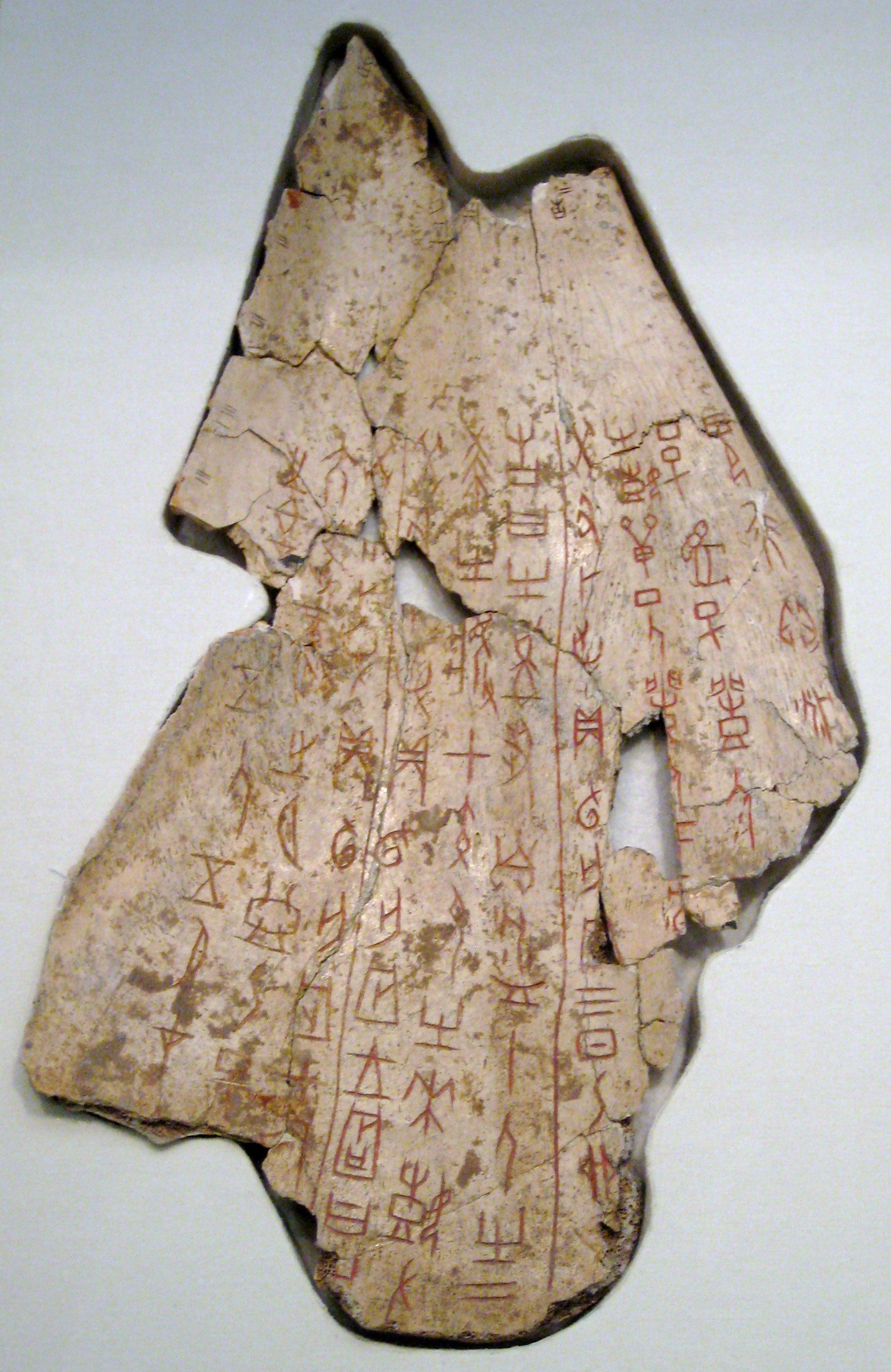
An ox scapula oracle bone, from 1200 BC. (Photo: BabelStone/CC BY-SA 3.0)
The bones, they determined, had been used to read the future. Ox scapulae and the plates of turtle shells would be thrown into a fire and the cracks that developed interpreted as augurs. Whatever the bones foretold would later be carved onto their surface. Some had etched on them names of the soothsaying kings, too, and now, instead of the future, those inscriptions shed light on the past. The kings’ names matched with later records of a Shang Dynasty that had ruled in the second millennium B.C.
Before, the Shang dynasty had been more legend than history, but the discovery of the “oracle bones” shored up a long-held tenet of Chinese history: China’s Yellow River basin, where the oracle bones were discovered, was the cradle of Chinese civilization. From this northern area came China’s Confucianism, its structured societies, its technological innovations, its heroes and kings. Slowly, that culture was spread through the area we now call China, starting under the expansionist Han empire that ruled from 206 B.C. to 220 A.D.
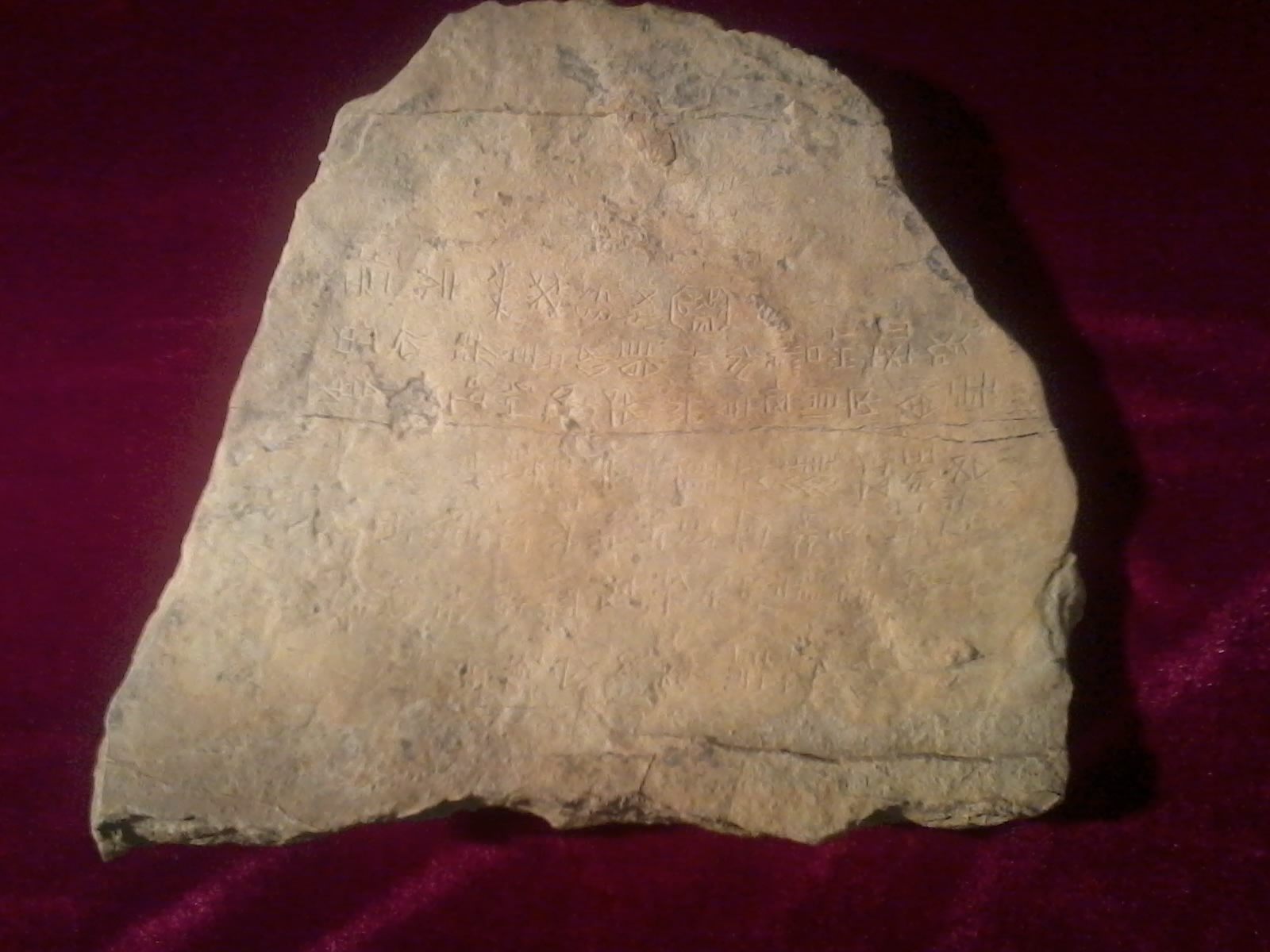
One of the original inscriptions found in Guangxi. (Photo: Sheldon Gosline)
The inscriptions Gosline had been given, though, came from the south of China, in Guangxi province, which borders on Vietnam. Guangxi is about as far from Henan, where the oracle bones were discovered, as Kansas City is from New York, and in the annals of Chinese history, this area was considered a backwater. It’s a mountainous region, and even today, it’s less industrialized than other parts of China and pocketed with nature reserves.
Both because of the subtropical climate and because of its history, little archaeological work has been done in Guangxi. But, if a century ago dragon bones dug from a field could lead archaeologists to one of the oldest known dynasties of northern China, perhaps stone inscriptions dug from southern fields might lead to another great discovery, a place and people that had been overlooked.
If, that is, these new inscriptions were even real artifacts of another age. “Some people wanted to write the inscriptions off as a complete forgery,” says Gosline. Originally, he was skeptical, as well, but he became convinced they might be authentic. Those first examples might have been brought in by farmers, but he had found more of the Persian-looking characters in inscriptions uncovered in an official archaeological dig of the same area. If the inscriptions were a forgery, the culprit would have had to bury those fragments in a way that fooled archaeologists. Usually, too, forgers will copy published texts, but Chinese scholars had never seen anything like these. The rotation of the Persian-like characters, 90 degrees from their proper position, also convinced Gosline that the inscriptions were real.
“Why would a forger go through that elaborate disguise, of hiding that it’s old Persian?” he says. “The simple solution is that it’s genuine and, somehow, in antiquity, there was some sort of trading or culture connection with the Persian empire.”
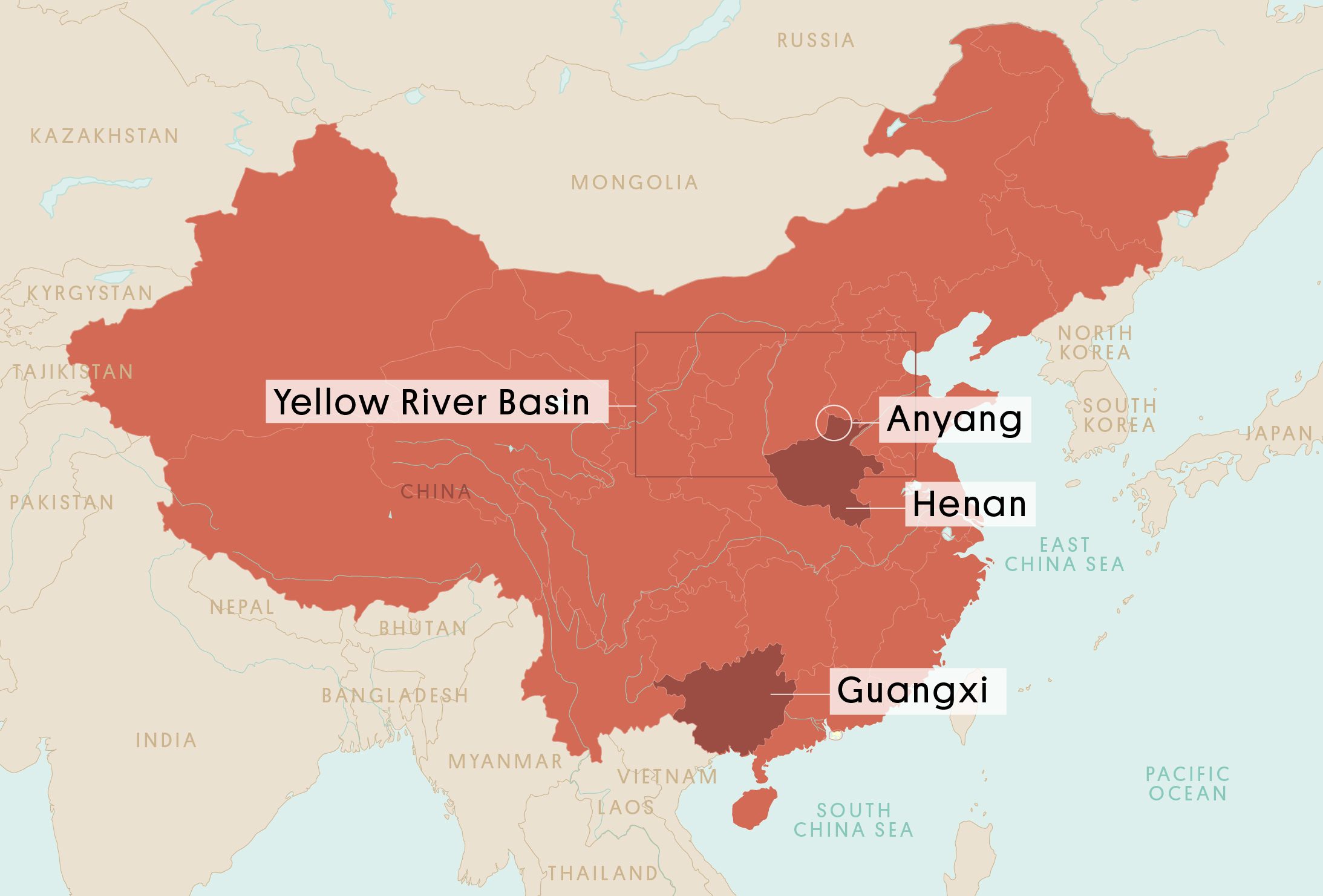
Guangxi, where Gosline’s inscriptions were found, is far from the Yellow River basin, long thought of as the cradle of Chinese civilization. (Map design: Blake Olmstead)
Then, Gosline made a discovery of his own. In the spring of 2014, he traveled south, to an excavation site opened by local archaeologists, in the same area where those first stones had been found. Gosline doubted he might find anything of interest here, until he started walking the site, and he noticed the rocks. Hulking, some almost as tall as he was, they were spaced symmetrically, in even intervals, and seemed to be arranged purposefully—like they lined up, along particular diagonals. Many of them were lined with deep crevasses. Could they be inscriptions, too? “It was evident to me that the space was somehow special,” Gosline would later write. That’s when he got a piece of paper and started to map.
He noted the regularly spaced markers, along with what he describes as “a man-made platform of megalithic construction.” Behind that platform, there was another stone, with an indentation at the center—what “appeared to be a carved chair or throne.” He sat down, and when he looked up, towards the platform, he “sensed a harmony and that I was in the midst of an ancient time calculating device,” he would write. On a rock at the very center of the site was a particularly notable set of lines: later, Gosline would identify an inscription there—the Chinese character for “harmony.”
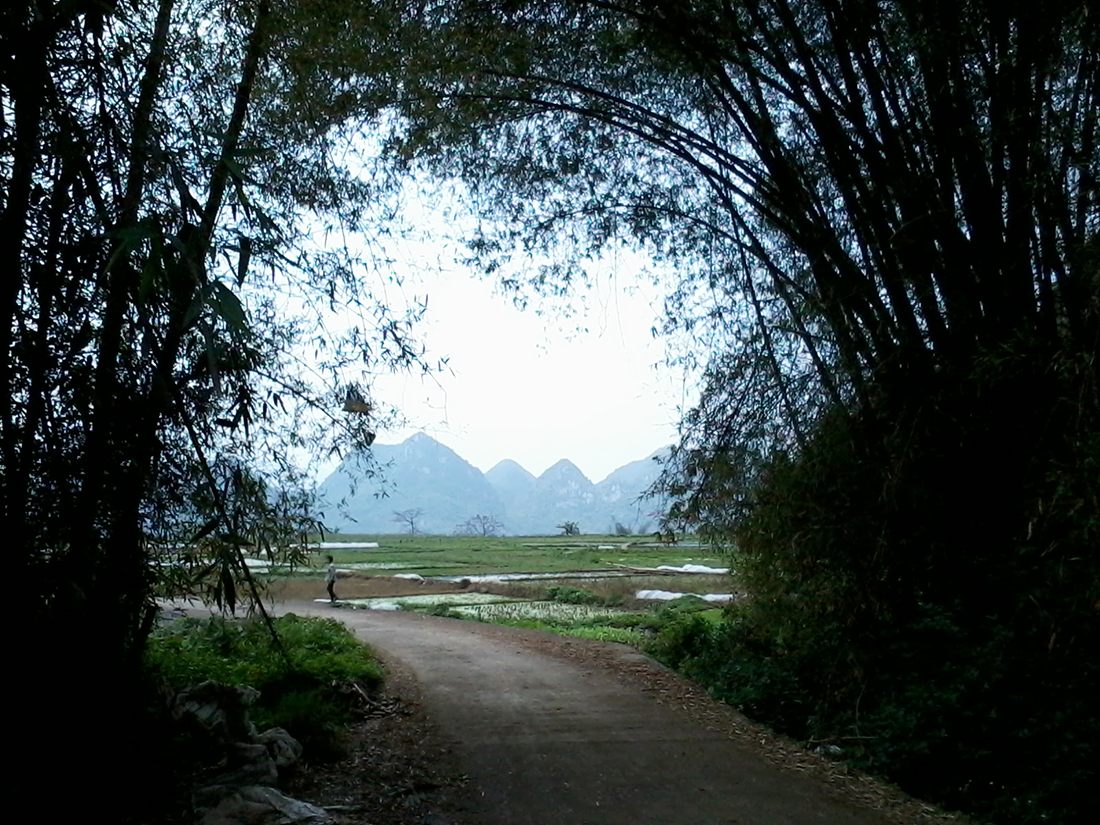
Pingguo County, situated in Guangxi Province, China. (Photo: Sheldon Gosline)
Gosline knew that what he had found wasn’t as immediately impressive as an Egyptian tomb or a Mayan pyramid. In a lecture at the Explorers Club in New York City later that year, he would pose the question: “What does civilization look like?” What he had found, he suggested then, might not be as dramatic as “monumental art” or “fantastic tombs with golden treasure”—but it could be connected to a civilization that, in some speculative accounts, had advanced throughout the peninsula now divided into Laos, Thailand, Vietnam and Cambodia and the evidence for which “has been, shall we say, to some degree suppressed by the empire to the north that took control.”
Maybe, in other words, he had found evidence of a civilization that was lost on purpose.
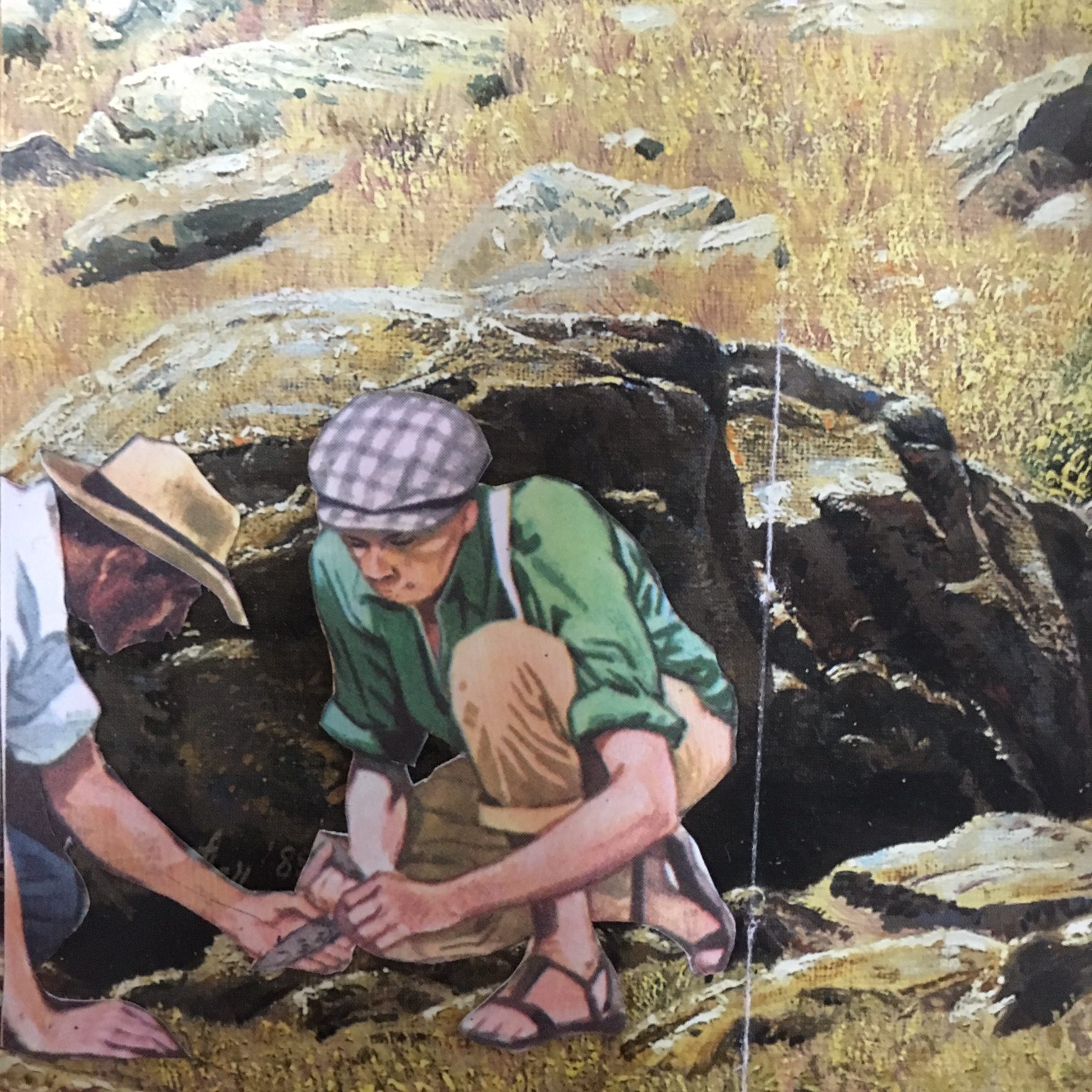
(Illustration: Michael Tunk)
A Singular Scholar
If Gosline’s theories defy categorization, so does the man himself. He is not a conventional scholar. After piecing together what he thinks might be evidence of missing link in Chinese history, he didn’t publish his findings in a peer-reviewed academic journal. He didn’t have a permanent position as university faculty, and he’s not a recognized expert on Chinese history or Persian cuneiform. His career has long followed a romantic streak—in many ways, Gosline is a throwback to a time when scientific discovery was governed by curiosity more than credentials.
When choosing a college, for instance, Gosline decided on the University of Pennsylvania over Princeton, he says, because on a visit, he went into the Penn Museum, which has one of the largest Egyptology collections in America, and thought, This is what I want to study. It was an impractical career choice, but he threw himself into it. He started taking classes on Middle Egyptian, and, for his work study job, creating tracings of ancient Egyptian stelae. Soon, he was working on excavations at Abydos and Memphis. After college, he went to Cambridge, England, where he boarded with Professor Joseph Needham, an expert in Chinese history, and the two men would go about the house dressed in the clothing of the cultures they studied, Needham wearing Chinese styles and Gosline, Egyptian.
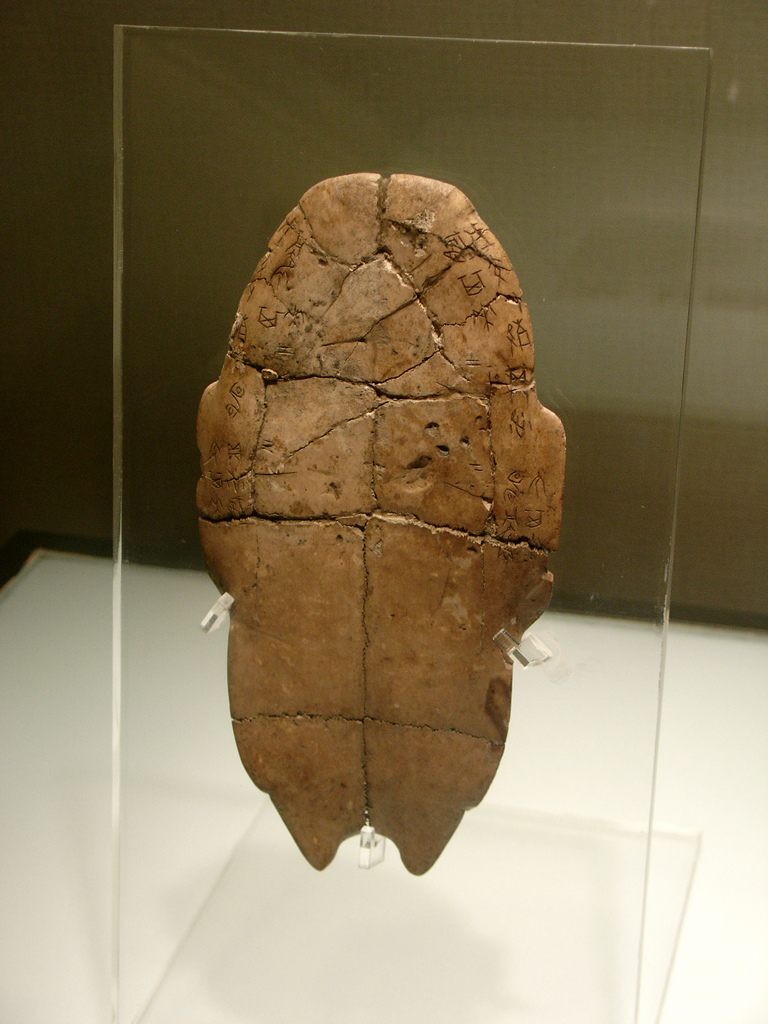
A turtle oracle bone, from the Shang Dynasty. (Photo: David Schroeter/CC BY-ND 2.0)
Gosline had a knack for falling in with characters: After Cambridge, he spent a year as a curatorial intern at a Virginia art museum, where he befriended Roger de la Burde, a wealthy Polish emigré who claimed he was a count and whose 1992 death was wound into a murder mystery. For himself, Gosline pursued the aesthetic of an old-school explorer. At one point, he had a series of pictures taken of himself, dressed in turban, jeweled vests, and a dramatic mustache, and when he started an academic publishing company, he called it Shangri-La Publications.
His research career, too, had the trappings of freelance adventurer. After doing graduate work at University of Chicago and University of Wisconsin, he made his way by leading archaeological tours in Peru and Egypt, teaching Egyptology in China, and along with his academic press, opening a Shangri-La clothing and gift store in Ithaca, New York. Through the early 2000s he published academic papers semi-regularly in Discussions in Egyptology (a British journal, no longer in publication, which printed contributions “just as we receive them”) and the China-based Journal of Ancient Civilizations. Through Shangri-La Publications, he released a series of books, including one detailing a method of creating cursive hieroglyphic characters based on techniques for writing Chinese. Though it had “really bad graphics,” he admits, and a reviewer said it was “a curiosity more than anything else,” it’s now in its third reprint, according to Gosline, and still selling.
In 2011, he moved to London to pursue a Ph.D, in the history of medicine, at University College London. Once he completed the degree, he decided to return to China to research the writing of the country’s minority groups. That line of exploration had led him to this spot in Guangxi. He suspected the gathering of rocks might be an ancient observatory, organized to track the movements of the sun, by the same people who had somehow encountered written characters that came from far to the west. He knew he needed experts to help establish what he had found. He would reach out to Chinese archaeologists and experts from the West in archaeoastronomy, he thought, and they would come back to check his work.
Archaeology, Old and New
Western archaeology came to China rather recently, in the 1920s, but records of people collecting, studying and keeping relics date as far back as Chinese history itself. What stories get told, though, always depends on who’s talking. Throughout the history of archaeology in China, K.C. Chang wrote, in the 1986 version of his Archaeology of Ancient China, the investigation of ancient objects had “always been a tool of Chinese historiography.” As the Han dynasty expanded its territory with incursions to the south, historians were already crafting stories about the northern kings and innovators of the past and about the rightness of the Han leaders who had decided they should control all the land they could.
For most of the 20th century, Chinese history was told as a story of diffusion, in which the people that Han armies encountered in the south, who they called Yue, benefitted from the north’s cultural exports. The Yue were thought of as barbarian people, less civilized than their conquerors. They spoke different languages; they wore their hair differently. They occupied roughly the same space in Han thought as the Gauls did in Roman history.
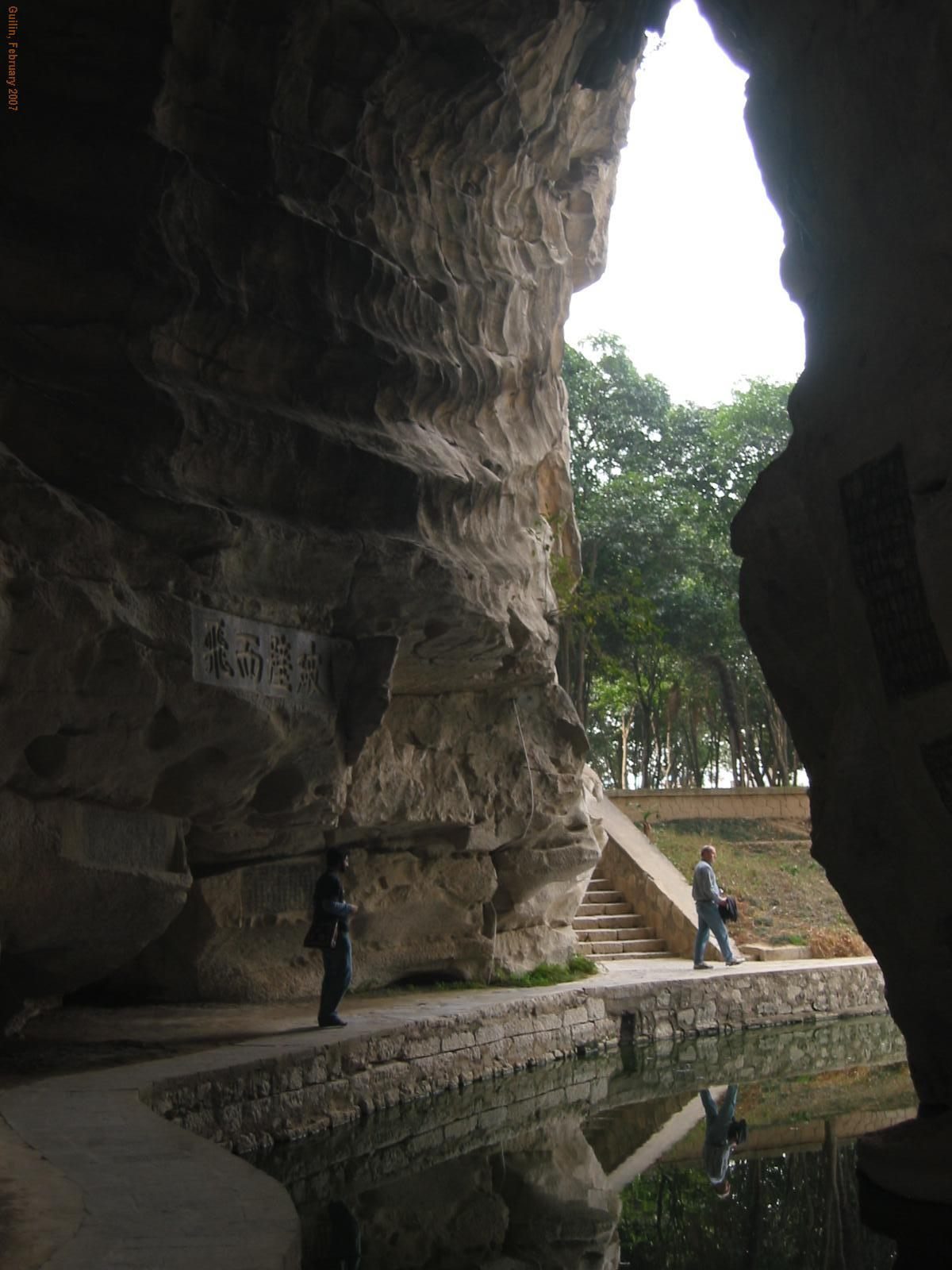
Karst caves in Guilin. (Photo: Chris Moss/CC BY-SA 2.0)
To some extent, the archaeological record backs up this story. There have been significant archaeological finds in the south: some of the earliest evidence of hominins inhabiting this part of the world came from limestone karst caves in Guangxi province, hundreds of thousands of years ago. But the people living in the area before 1000 B.C. tended to live in egalitarian societies, without social differentiation between higher and lower classes of people. No traces of prehistoric cities have been found in the area, either. The first elaborate bronzes to appear in the area came from the north; local bronzework on that level didn’t start until hundreds of years later. There has been nothing found in the south that compares to the spectacular archaeological discoveries—the oracle bones, the oldest-known noodles, the Terracotta Army—that have come from the north.
The story of south and its culture, though, is still contested. Some Vietnamese historians draw a direct line between the people who lived in this place thousands of years ago and the people who now live in Vietnam. Viet is actually another form of the Chinese word Yue, and in one version of this history, the Yue people resisted the incursions from the north and became the ancestors of the present-day Vietnamese people. If the history of southern China can be seen as part of a noble Vietnamese history, any major finds could be put into service of that story, as well.

One of the possible inscriptions Gosline found in Guangxi. (Photo: Sheldon Gosline)
In June of 2014, Gosline returned to what he calls the “observatory complex,” this time with a whole team in tow. There was an expert archaeoastronomer from England, a scholar from India, and a handful of Chinese experts, from both the Chinese Academy of Science and Chinese Academy of Social Sciences’ Institute of Archaeology. Besides the stone arrangements that had first caught Gosline’s attention, they planned to examine caves he thought could contain royal burials and two other sites, where he had found more inscriptions and intriguing stones.
Over the next few days, the scientists of various stripes canvassed the area. They sat in the chair. They cleared the growth from the large platform. They measured angles and looked for alignments between stones and celestial events. They examined the lines in the stone and took impressions, in silicone, to examine under powerful microscopes. They searched for evidence of human occupation of those sites.
After all the work was done, Gosline was satisfied. “We confirmed most of the things I’d found as potential alignments, and we confirmed that there was artifact evidence in the area that showed human occupation,” he says. He was convinced that what they had found indicated the possibility of a civilization with time-keeping technology, advanced mathematics, writing, and monuments, he said at the talk at the Explorers Club in New York, that same fall.
The Chinese scientists who had joined him at the site, though, were less convinced that what they had found amounted to that much. “I’m afraid you would be disappointed on the so-called Pingguo County archaeoastronomical site,” one of the team members, Dr. Xu Fengxian wrote me, when reached by email.
Not long after the team came back from the field, Dr. Xu wrote a report on alignments between the stones and celestial phenomena, using the “chair” that Gosline had identified as a starting point. There was one significant finding, she wrote: “On the winter solstice the sun really set in the direction of the huge stone”—the megalithic platform. “Even so, I don’t agree that the huge stone could have been used as a sunset point on winter solstice.” The chair-stone was rough and showed no evidence of human activity. It was so close to the huge stone that it would have been difficult to observe anything by sitting there.
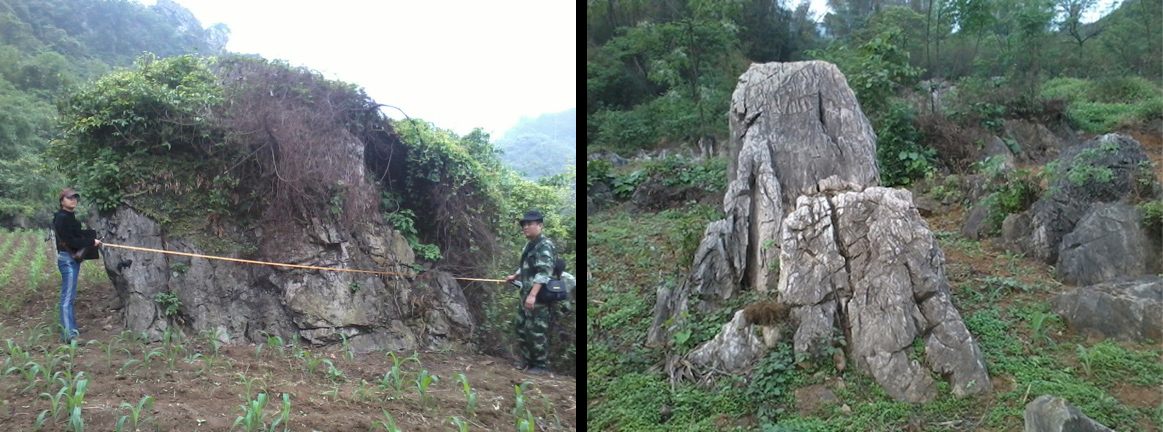
Features like this “megalithic platform” and slanted rock seemed like they might have been used as part of an observatory. (Photo: Sheldon Gosline)
The Chinese scientists were skeptical of the other features Gosline had found, as well. At two sites that he had them examine, they found no evidence of human occupation. The caves that had excited his interest were not gravesites, Professor He Nu wrote in another report. The Chinese scientists also found that “most of the scratches, the petro-glyphs and plan maps on the rocks…are natural.” Even the stone planks with the inscriptions on them couldn’t be said to show much. “The most fatal problem is that the planks could not be dated precisely,” wrote He. (Gosline says that after the fieldwork, the group gathered to give oral reports, and one of Chinese specialists did say the carvings were consistent with drill holes made for an inscription; the published report only included her more skeptical analysis. He also points out that the Chinese scientists compared the petro-glyph lines with jade etchings and says one wouldn’t expect to find the same wear patterns in a limestone inscription.)
Despite those hesitations, the Chinese scholars recommended that more work be done at the first site. It “might have worked as an important settlement” in the area, according to He.
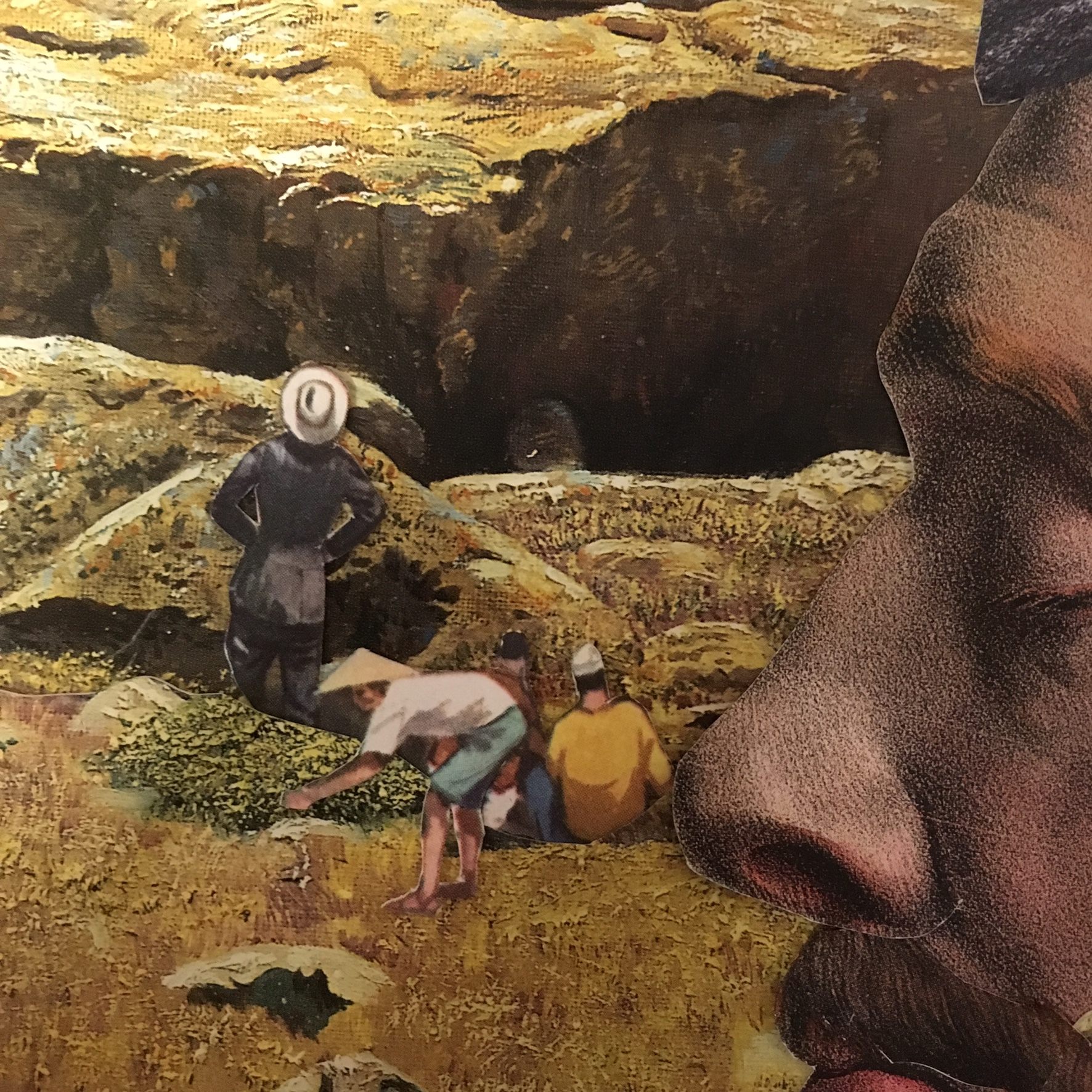
(Illustration: Michael Tunk)
Civilization and Its Discontents
The fact that Gosline seems to follow an Indiana Jones narrative is not exactly a compliment. The story of a white man who comes to a foreign land and thinks he finds something new, a civilization that hasn’t been recognized, is old and tired. In one version, the Westerner discovers something that’s new only to him, like Angkor Wat. The people who lived in Siem Reap knew about the giant, overgrown temples in the forest; they were “lost” only to the West, which hadn’t had hold of them to begin with. In another version, the explorer is looking for a legend and just isn’t there—at least, not in the form he imagined—like the Lost City of Z. Or maybe the Western scientist does actually find a place that was lost, to everyone, like Tut’s Tomb, only to spirit the most valuable treasures far away.
In any version, though, these type of adventures are hard to come by in the 21st century. When National Geographic announced the discovery of a lost city in a Honduran rainforest, people who had been studying the area for years fought back against the narrative of the “lost city.” Not only had extensive archaeological work already been done in the area, they wrote, but local hunters and fishers visit even the most remote place of the region.
Layer on the contested history of the south of China, the imperial instincts of Chinese rulers going back hundreds of years, and the interference of British colonialism and all the ideas about nations and cultures that came with that. Add in a more recent idea: the development Chinese culture is a more complicated story than was once allowed. Archaeologists have discovered ancient cities (like Sanxingdui, excavated in Sichuan in 1986) that were contemporary with but distinct from the northern Shang dynasty, and they indicate that Chinese culture did not come exclusively from the north, packed like a Blue Apron box, with everything needed in perfect proportions, instructions included.
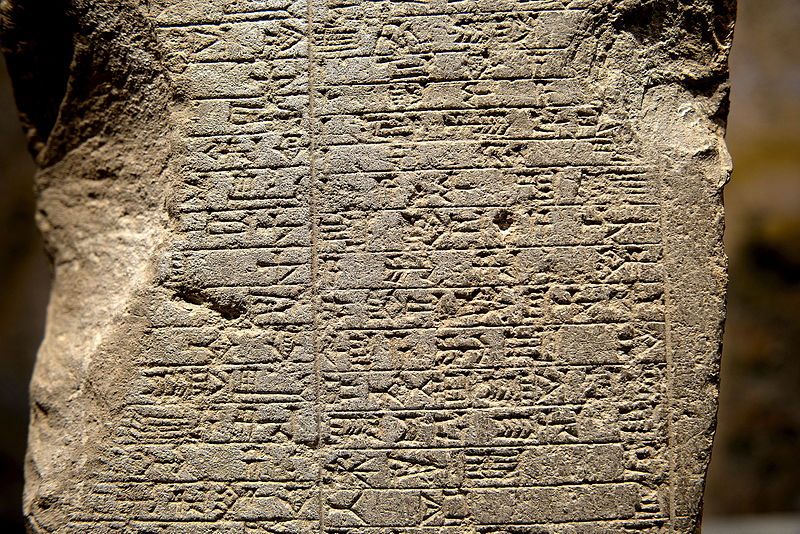
An example of cuneiform inscription from 2003-1595 BCE, on display at the Sulaymaniyah Museum, Iraq. (Photo: Osama Shukir Muhammed Amin FRCP(Glasg)/CC BY-SA 4.0)
Given all that, what kind of lost civilization are you left with?
“To say that there are lost civilizations there is one of those Western fallacies,” says Erica Fox Brindley, a cultural historian of early China, who teaches at Penn State University. But she also disputes the old story that people from the north “swept across the Southlands with such political, military, and cultural force that the Southerners were naturally swayed and won over by it.” Perhaps southern people did not adopt northern culture wholesale—or if they did, perhaps that didn’t happen until much more recently, within the past 500 years. Even though the old paradigm of early Sinicization has not been truly challenged, Brindley writes in her book Ancient China and the Yue, it’s “clearly a gross oversimplification of modes of cultural change in Chinese history.”
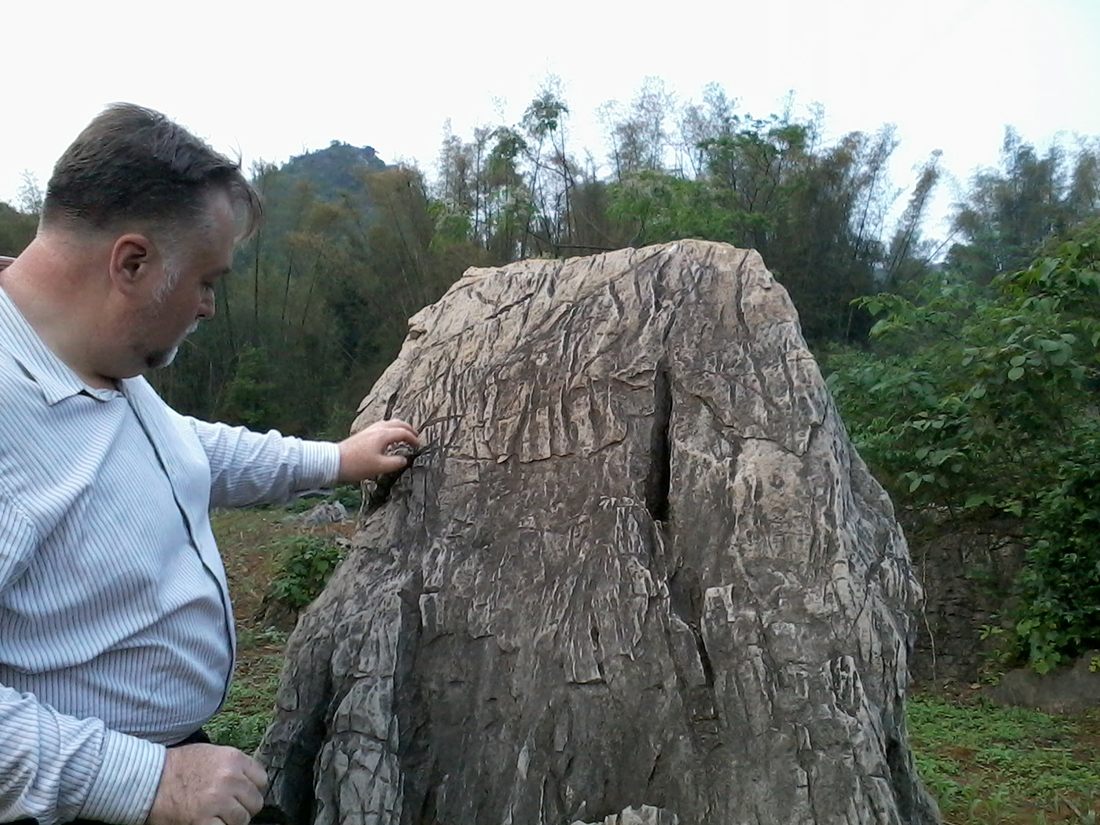
Gosline examines possible inscriptions at the site in Guangxi. (Photo: Sheldon Gosline)
Brindley has spent the past few years studying the history of early China’s southern frontier, which extended from roughly the area on China’s southeastern coast where Taiwan sits off the mainland, west to mountainous Yunnan province, where China borders Myanmar. The scant information about the people who lived here comes mostly from archaeological evidence or from written accounts from northern dynasties, but in her book, Brindley pieces together a picture of a region of independent kingdoms, of people who likely spoke many different languages and who were connected in trade both over land and through seas and rivers. In some places, people in the south even made markings on their pottery that some scholars believe could have contributed to the development of writing further to the north.
But all the Yue people were not necessarily connected in a cohesive “civilization” (a term that archaeologists use variably, but often to refer to states). Even until a few hundred years ago, there was notable cultural variation in Guangxi and evidence that centralized powers had trouble controlling it.
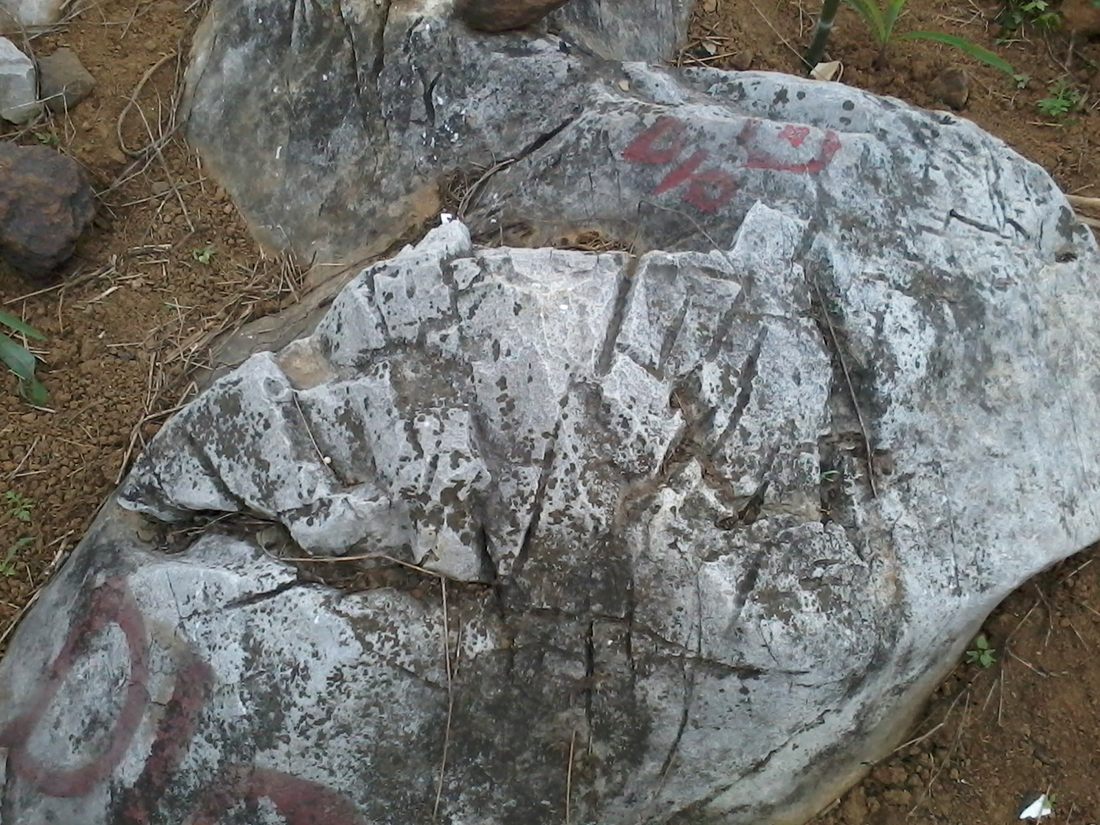
Gosline identified a character for “harmony” on this rock. (Photo: Sheldon Gosline)
Francis Allard, one of the only Western archaeologists to work in the province, has found that in pre-Imperial times even across short distances, of 50 miles or so, the archaeological materials that turn up tend to be very different—an indication that this area was likely populated by small and distinct groups living in mountainous area. In prehistoric times, these people were connected by indirect systems of trade with the north and with people further to the south, in what’s now Vietnam. They made cliff paintings, too. “It’s not rare to find incised symbols on stones and pottery in southern China before the emergence of Chinese writing,” says Allard. But these are small-scale societies, with great cultural variation. In Guangxi, he says, ”there is nothing in that area that members of public would think of as a civilization.”
Gosline’s original observation, that the newly discovered inscriptions looked to include Persian cuneiform, is still unproven, too. The scholars I talked to found the idea intriguing but unlikely. Even Nie Hongyin, the colleague who originally shared them with Gosline, isn’t fully convinced. “Sheldon’s suggestion is probable but there remains a doubt,” he wrote, in an email.
None of this is entirely inconsistent with Gosline’s ideas. The region “needs to properly studied in a methodical way,” he says. “That’s what I would really advocate.” Without a fuller analysis, he points out, there’s always uncertainty; it’s not possible to say, right now, what level of importance the site he identified has compared to other sites that might be found in the region. “I have doubts,” he says. “But it’s not the kind of doubt where we shouldn’t do anything about it, but where there’s a question that we should really try to answer.”
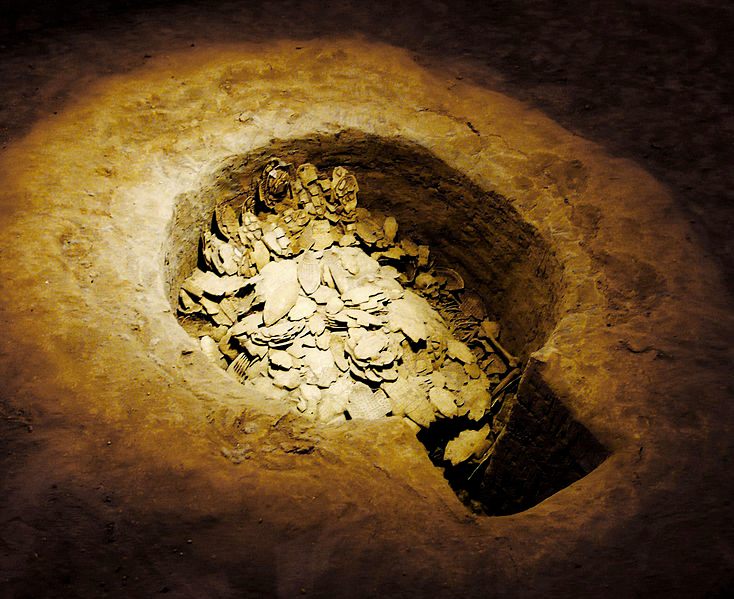
Oracle bones from the Shang Dynasty in a pit at Anyang Yinxu. (Photo: Xuan Che/CC BY 2.0)
That is happening. Scholars like Brindley and Allard have dedicated years to better understanding the culture and history of the prehistoric populations in this region “There was this incredible history of people probably going up and down the coasts from thousands of years” that deserves more attention, says Brindley. Allard is fascinated by big, flat stone “shovels,” polished and intricately carved, that were made in southern Guangxi some time in the third or second millennia B.C. and used in a religious fashion. “If you look at the blades, they would have taken a tremendous amount of time to make,” he says. But the edges indicate that they were never used. Instead, they were arranged against one another, with their blades pointing up, at sites where no other artifacts had been found.
When the shovels are found outside of their core area, though, they’re no longer arranged in that same, strange fashion. What intrigues Allard is the question of how people at the time understood these objects. Four thousand or so years ago, what did they think the stones were for? What did they think of the people who made them? All we have left are the ghosts of language, land and rocks marked by nature and human hands, intricately carved or covered in dull creases, open to interpretation from amateurs, scholars and everyone in between. But we’re still trying to figure out what they mean.



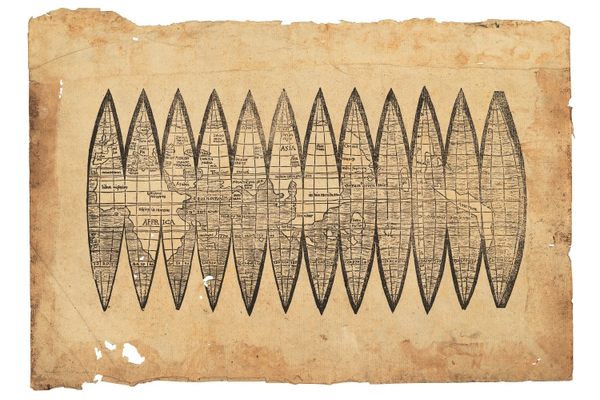
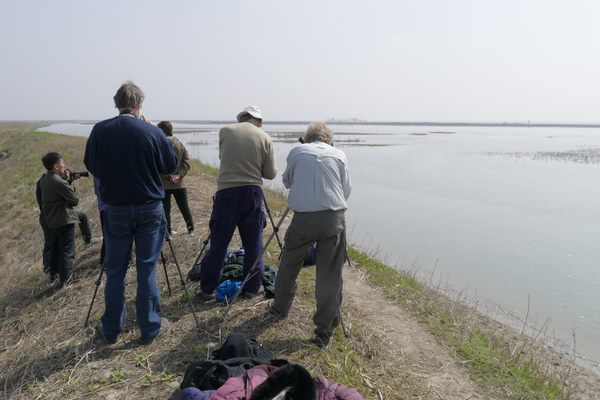




Follow us on Twitter to get the latest on the world's hidden wonders.
Like us on Facebook to get the latest on the world's hidden wonders.
Follow us on Twitter Like us on Facebook